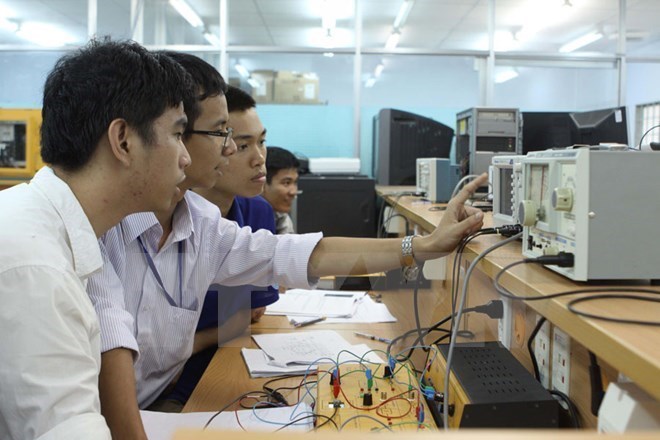Viet Nam improves Global Innovation Index performance
Viet Nam recorded the greatest ranking improvement on the Global Innovation Index 2018 (GII) thanks to the country’s efforts to deploy synchronous measures to improve its business environment, national competitiveness, and innovative capacity.
 |
| Illustrative image (Source: VNA) |
In a recent interview granted to the Viet Nam News Agency, Deputy Minister of Science and Technology Bui The Duy said that in 2018, Viet Nam, along with Malaysia, Thailand, and Indonesia, continued to improve their innovation rankings in Southeast Asia.
Viet Nam ranked 45th out of 126 economies in the GII 2018 report conducted by the World Intellectual Property Organisation (WIPO) in collaboration with the business school INSEAD of France and Cornell University of the US. To reach this position, Vietnam leaped two places since last year and 14 places in comparison with 2016.
Duy said amongst the ASEAN, Viet Nam is just behind Singapore, Malaysia, and Thailand, and ahead of Brunei, the Philippines, Indonesia, and Cambodia.
Viet Nam led the ASEAN in terms of investment in education, and the country reported good outcomes in the sub-indices of labour productivity growth and attraction of foreign direct investment (FDI), he added.
To continuously improve the innovation index, Duy held that it is necessary to improve sub-indices on the regions of business environment, capital and investment market, knowledge application, and technology.
At the same time as putting in efforts to more effectively implement the Government’s Resolution No.19 (dated 15 May, 2018), the country is also trying to improve the business environment, increase national competitiveness, and complete the national intellectual property strategy, he said.
Innovation is now widely recognised as a central driver of economic growth and development. The Global Innovation Index aims to capture the multi-dimensional facets of innovation by providing a rich database of detailed metrics for 126 economies.
The GII 2018 is divided into seven pillars. Of which, the first five pillars are in the group of innovation input sub-indices, including institutions, human capital and research, infrastructure, market sophistication, and business sophistication. The last two pillars are in the group of innovation output sub-indices, including knowledge and technology outputs, and creative outputs.
Themed “Energising the World with Innovation”, the GII 2018 analysed the energy innovation landscape for the next decade and has identified breakthroughs in fields such as energy production, storage, distribution, and consumption.
(Source: VNA)